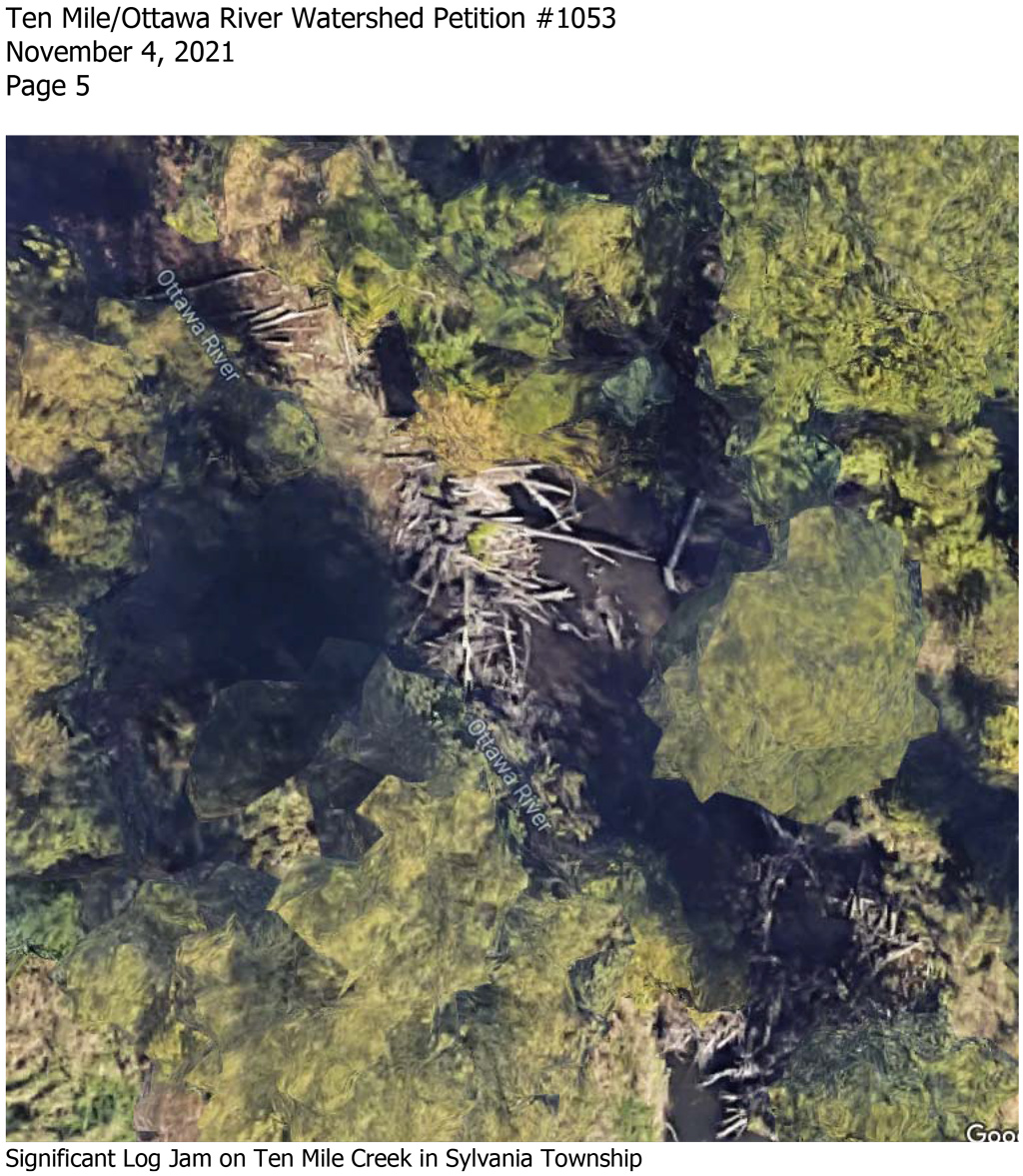Rich or poor – few escape the power of the Lucas County Board of Commissioners, but the City of Toledo certainly can and should!
City folks should not be taxed for rural ditches.
On November 4, Lucas County Board of Commissioners voted to pursue the controversial Ten-Mile Creek Watershed ditch petition affecting 73,236 homeowners and their families. Two of our three Lucas County commissioners, along with three Fulton County commissioners, voted for it, with the President of the Lucas County Board of Commissioners, Tina Skeldon Wozniak, notably absent from her duty to officiate the hearing of this important issue and vote on it.
On December 2, Lucas County will vote for the matching Swan Creek Watershed ditch petition, nailing a total of 117,554 Lucas County property owners and their families to suffer these two ditch petitions, with an extra 6,095 Fulton County property owners added into it, which earn them the three votes from the Fulton County Commissioners too.*
No proof has ever been shown at any of the “views” to justify the sweeping petition. In the final report submitted on November 4 by the Lucas County Engineer, Mike Pniewski, only a single exhibit is in the record as an example of cleanup and maintenance that needs to be done to justify this overreaching, outrageous petition — it is an image of an out-of-date Google Earth overhead image captioned “a significant log jam in Sylvania Township.”

I traced Google Earth up the 10-mile creek and found the exact location, behind the homes of rich and prominent people, off Corey Road in Sylvania Township, on Riverhills Lane. That’s all the county has to show us. It is the same example that the county engineer gave to the Channel 13 news team on August 19 for their news story on the ditch petition. They filmed a tree down on the floodplain and a few logs in the river, behind these million dollar mansions.

One of the residents within a few hundred feet of this example is the grandson of Norman Nitschke, the famous safety glass industrialist who donated millions to the University of Toledo for three new engineering buildings with his name on it. Strangely, Lucas County Engineer Mike Pniewski, in his near-full-time moonlighting job that was revealed to us in the September 10 edition of the Blade in regard to his teaching five freshman classes at the university, teaches a class in Nitschke Hall. Norman Nitschke died in January 2021 of Covid-19. It’s so peculiar that our Lucas County engineer would use an example from the neighborhood of this great man’s grandson with the same name – Nitschke. We should expect at least a modicum of respect and discretion from our elected officials when dealing with our citizens — renown or otherwise. It begs the question, did Mike Pniewski ever contact the property owners of the log jam example, or is he really so crass that he would drag them through the mud with no consideration, just to push this ditch petition through?

The owners of the property used in Pniewski’s only example are also quite distinguished. In the 1970’s, Malcolm Keith Weikel served in Washington, DC as the Commissioner of Medical Services Administration responsible for Medicaid. He later became the COO of HCR ManorCare, then the largest nursing home company in the United States. However Mr. Weikel also died in 2021, in March, just as Mike Pniewski was shopping around for a sponsor for his opportunistic ditch petitions.
It is worth noting here that even though a log jam was spotted in Sylvania Township, that the Sylvania Township trustees refused to sponsor this ditch petition. Did Pniewski tell them about their log jam? Pniewski then went to Spencer Township trustees for their sponsorship (even though they are technically in the Swan Creek watershed.) It is unknown if Pniewski ever contacted the Weikels about their log jam that he found on Google Earth, or whether he just used the image to justify this ditch petition. I venture to say that if he had contacted the owner about their log jam and explained to them that someday it might have an impact on flooding and drainage problems, the problem would have been solved right away, without Pniewski getting to use it as an opportunity to drag in the entire county, and Fulton County too. Furthermore, it is unproven that the log jam has ever caused any flooding or drainage issues. Mr. Nitschke told me emphatically that he had no such problems, when I reached out to ask him if he or his neighbors were experiencing flooding or drainage problems from the river.
Contrast that picture, of the wealth and advantage of these famous Sylvania Township homeowners and their splendid river views, to the image of Toledo’s disadvantaged city population being forced to pay for the clean-up of those rich people’s log jams through this overreaching ditch petition. They use the rich to steal from the poor.
Look at these arbitrary maps drawn for those who are going to have to pay. For example, look at the Junction neighborhood behind the art museum in the city of Toledo. Every homeowner in that neighborhood is either named in the Ten-mile Creek or Swan Creek ditch petition. They will all be taxed. For what?



Is the City of Toledo really going to give Lucas County the right to force their disadvantaged population to pay for the clean-up of the river behind the homes of the richest people in Sylvania Township? Beyond that outrageous inequity, do we really want the county government to usurp our municipal powers and private property rights as well?
There is such a thing as Home Rule. Why is the City of Toledo letting Lucas County do this to us?
It is preposterous! The City of Toledo should take care of their many problems, and let the wealthy people of Sylvania Township take care of their problems. The same goes for ditches out in the country. Ohio ditch petition laws were written for unincorporated, rural parts of the state, not cities! City folks should not be taxed for rural ditches.
As for the river in the metropolitan area of Toledo, it is already taken care by its major owners, because the rest of the river, beyond the neighborhood of those prestigious and wealthy citizens mentioned above, is owned by the City of Sylvania, the Sylvania Country Club, the Franciscan Sisters, the Boy Scouts of America, the Metroparks, the Village of Ottawa Hills, the University of Toledo, the City of Toledo, and then a few miles of industrial ownership until it flows out of Point Place. All of these areas have had clean-ups and restorations, mostly funded by grants in programs that were initiated by Tina Skeldon Wozniak’s own father, Ned Skeldon, as is shown on this web page, Ned Skeldon, Betty Mauk, and their river legacy.
*The three Fulton County commissioners are all white men, I might add — and purportedly, they go along with how the two Lucas County white men vote. Those three votes from Fulton County represent 5% of the affected population, but they increase the ditch petition voting percentage in Lucas County’s favor by more than double! Who knows how the one woman (also white) of Lucas County would have voted on the Ten-mile Creek petition, or might be voting, for or against the Swan Creek petition – because she evaded the issue altogether – she was absent during the Ten-mile Creek hearing and vote. As the president of the board, and as a woman, she’s the closest thing to “diversity” that we have to represent us – but her vote wouldn’t count anyway, with that majority of male commissioners sticking together as they do – all due respect given to our white commissioners for their “service” to our community – but I strongly feel that they are not representative of me, nor of our diverse city population whatsoever, nor do they listen to us, and they are certainly not looking after our best interests. I live in the City of Toledo. Toledo City Council, will you please look after us? After all, the concept of “Home Rule” is the major reason why the City of Toledo exists, and that’s how you got elected!

